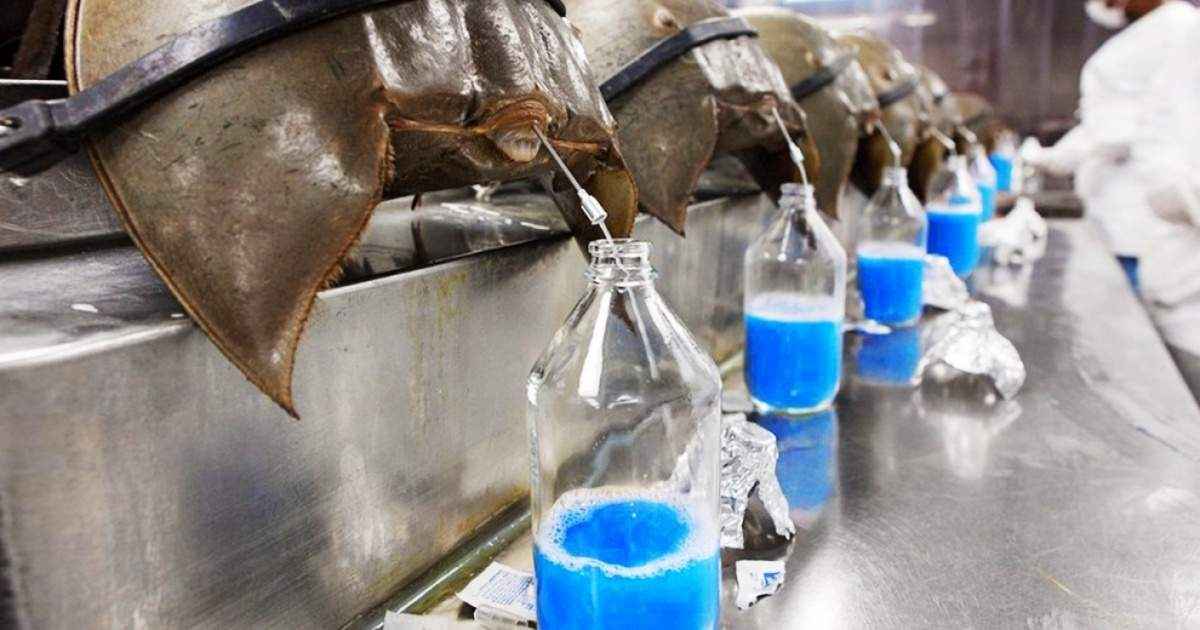It's not that stuff you always run out of for the windshield washer, that's for sure. And it's not the new Blueberry flavor of Sunny D drinks. And it's sure not Aqua-Velva aftershave.
No, it's horseshoe crab blood.
That's nice to know, right? And now you wonder why people are willing to pay 15 Gs for a bottle of blue blood. Well, here's the deal...
The blood of the horseshoe crab has remarkable antibacterial properties, and they don't even use Purell! But 450 million years of evolution has given them great ability to fight infection.
I mean, as many times as you've been to the beach, have you ever seen a horseshoe crab with a cold?
 |
| $15,000 worth of crab blood being harvested, and then they'll go right back to what they were doing (most of them) |
Crabs and other invertebrates (creatures without backbone, e.g. Mitch McConnell) fight infection by the use of amebocytes, while the rest of us use white blood cells. The Atlantic Horseshoe Crab, (Latin name: Limulus polyphemus) has highly-evolved blood to fight infection, so highly refined as to be of great value to the medical community.
I also contribute to the medical community by bringing my doctor all the New Yorker cartoons I can find involving patients sitting around in their underwear in the exam room of a doctor's office hearing lab test results, but I guess that's not the same.
Technical Explanation Dep't: If you drop one part in a trillion of bacterial contamination into this blue blood, it will coagulate for lab testing in under an hour; whereas the same test on mammal blood takes two days, plus postage. Coagulan is the name of the chemical that makes this possible, And science uses it for testing medical equipment and vaccines prior to use, making sure all is right.
A quarter of a million crabs are harvested every year for this purpose. Each crab donates 30% of his or her blood, and is sent back to the ocean with the thanks of all mankind and an Amazon gift card. Without their contribution, many people would die from infections.
Perhaps 10-30% of the volunteer crabs do not survive, and I'm sure the people at PETA are steamed about it, but in the grand scheme, I think saving lives counts for a lot. And what's more, the horseshoe crab's cousins, the blue crabs, wind up getting steamed too!

No comments:
Post a Comment